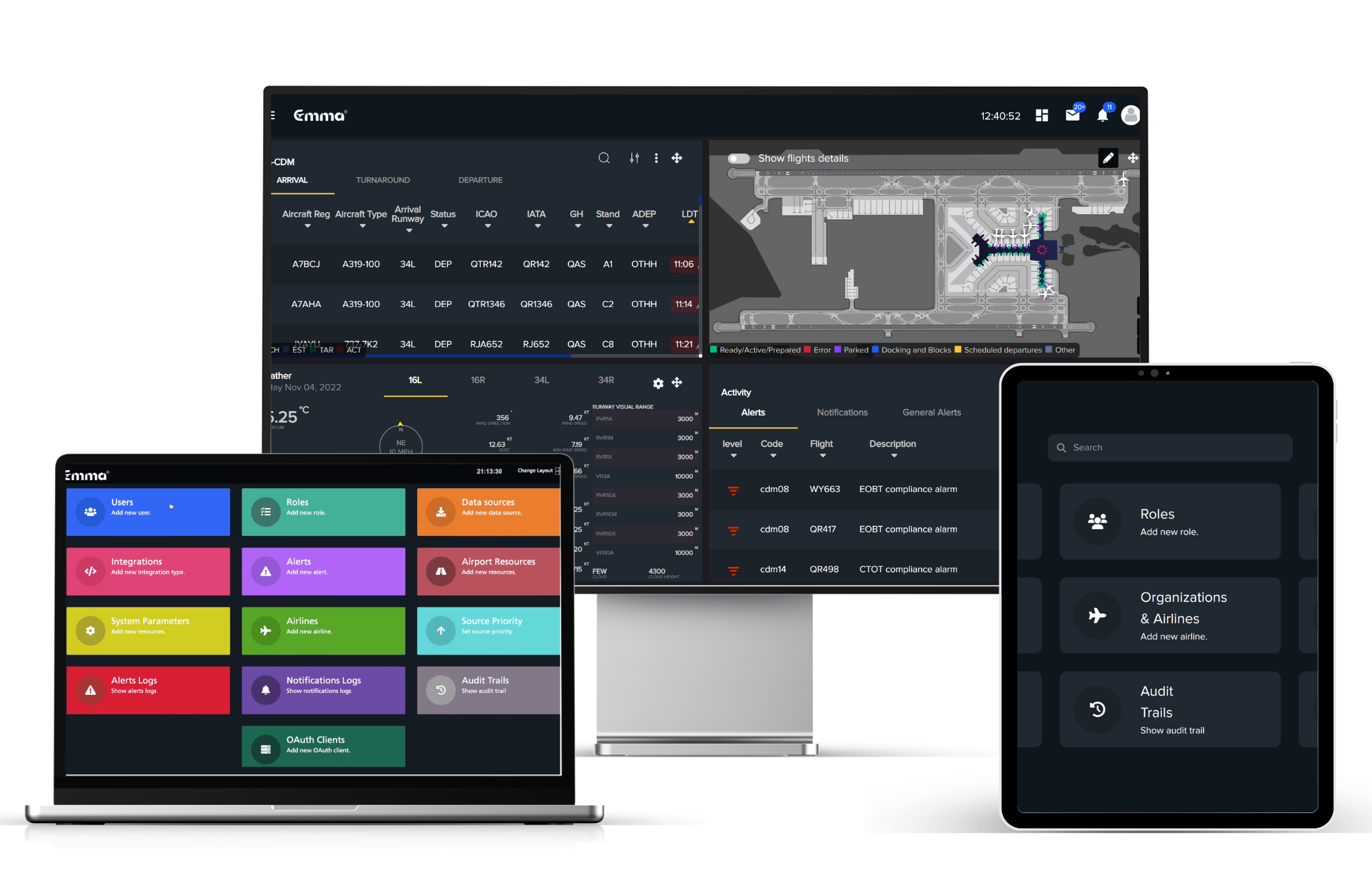
Reducing unnecessary taxi time could help the aviation industry put a significant dent in its carbon dioxide emissions. And while air travel may emit less than the food system and other types of transportation, every little bit counts at this point. This is why EMMA Systems — a plug-and-play technology powered by artificial intelligence and aimed at reducing that taxi time — looks like a promising solution. TriplePundit spoke with the founders, Wisam Costandi and Mohammad Hourani, about the innovative technology and their implementation goals.
Using artificial intelligence to predict and communicate needs
Incubated at Qatar Science & Technology Park, EMMA — or Environmental and Movement Monitoring for Airports — works with an airport’s current software management systems to predict landing and departure needs and communicate those needs to all necessary stakeholders, thus improving efficiency and reducing total taxiing time.
For example, the company’s artificial intelligence and machine learning technology can predict taxiing times and inform the air traffic controller, said Hourani, the COO of EMMA. With that information, they can better sequence the lights on the runway to reduce queuing.
“I'm sure it's happened to you where you've landed, you’re taxiing and then you pull into your gate . . . and you just sit there for 20 minutes, half an hour, waiting for the ground handlers to come. These are part of the issues that …. we mitigate,” Costandi, EMMA’s CEO, said. “Maybe there's been a gate change. Does everyone know? Or your plane has come in early and another plane is in your spot, what do you do? So all these issues we help address. And of course, if you're sitting there idling, there's a tremendous amount of [carbon] being emitted while you're just sitting around doing nothing.”
The goal is for EMMA to reduce taxiing time by one minute per flight. The system’s founders estimate that for a large airport like San Francisco International Airport (SFO) that could mean a reduction of 12,000 to 13,000 tons of carbon per year. But airports like SFO are not the company’s immediate or most pressing target.

Regional airports as a target market
At the outset, EMMA is deploying at small, regional airports because they have a quick sales cycle, are growing rapidly, and are looking for cost-efficient, innovative solutions.
“They have more passengers post-COVID than pre-COVID, whereas the very large airports are still at 70 percent or 60 percent of pre-COVID numbers," Costandi said. “So, we're not after the 100 biggest airports in the world, we're after the 1,000 smaller airports.”
And there’s another good reason to implement EMMA in regional airports first — a higher percentage of the flight’s overall carbon footprint can be captured on the ground.
“If you have a flight which is 1,000 miles, for example, only 25 percent of your [carbon] emissions happen on the ground during takeoff, taxiing and landing,” Costandi said. If it’s a shorter flight, on-the-ground emissions increase to 50 percent of the total flight footprint. “If we can just reduce incrementally and improve what's happening on the ground? That's big over the course of the year.”
EMMA in action
At present, EMMA is active in four airports in the Middle East and Europe. It got its start at one of the top 10 busiest airports in the world, Hamad International Airport in Qatar. And while it was launched right before the pandemic — which no doubt affected its expansion — EMMA is set to be implemented in an additional 70 airports soon.
While the goal is to reduce taxiing time by one minute per flight, there is a lot of variation. “It could be like three minutes up to 25, 30, sometimes even more,” Hourani said. “Depending on the inefficiencies and also on the peak hours in some cases. So, it really varies depending on the size of the airport.”
And EMMA aims to reduce energy use overall, not just on the runway. “We're cloud-based, so we would also like to reduce the presence of servers and infrastructure on-premises,” Hourani said. “So that we also reduce all of these costs for energy that is needed for this infrastructure and just optimize using our accurate data.”
A promising technology
EMMA is still fairly new, so it remains to be seen how wide its reach will be and just how much of an impact the technology can have. Still, it represents an important technological shift for an industry that spends comparatively little on research and development. And while air travel may produce fewer greenhouse gases in total than passenger vehicles, it still creates a sizable impact. With air traffic on the risee, saving a minute of taxiing time per flight with artificial intelligence certainly cannot hurt.
Image credit: Chris Leipelt/Unsplash

Riya Anne Polcastro is an author, photographer and adventurer based out of Baja California Sur, México. She enjoys writing just about anything, from gritty fiction to business and environmental issues. She is especially interested in how sustainability can be harnessed to encourage economic and environmental equity between the Global South and North. One day she hopes to travel the world with nothing but a backpack and her trusty laptop.













